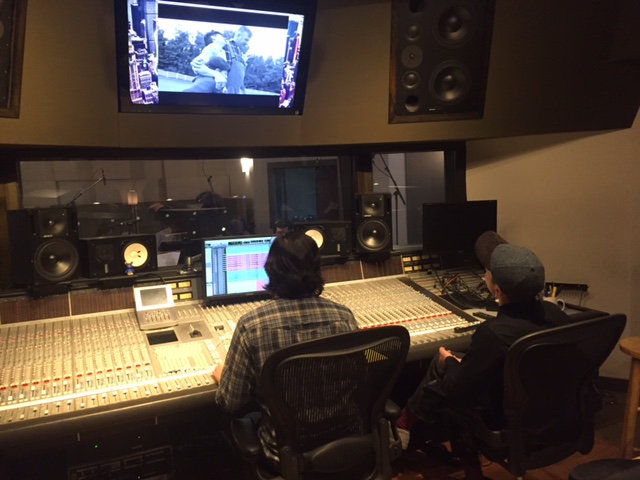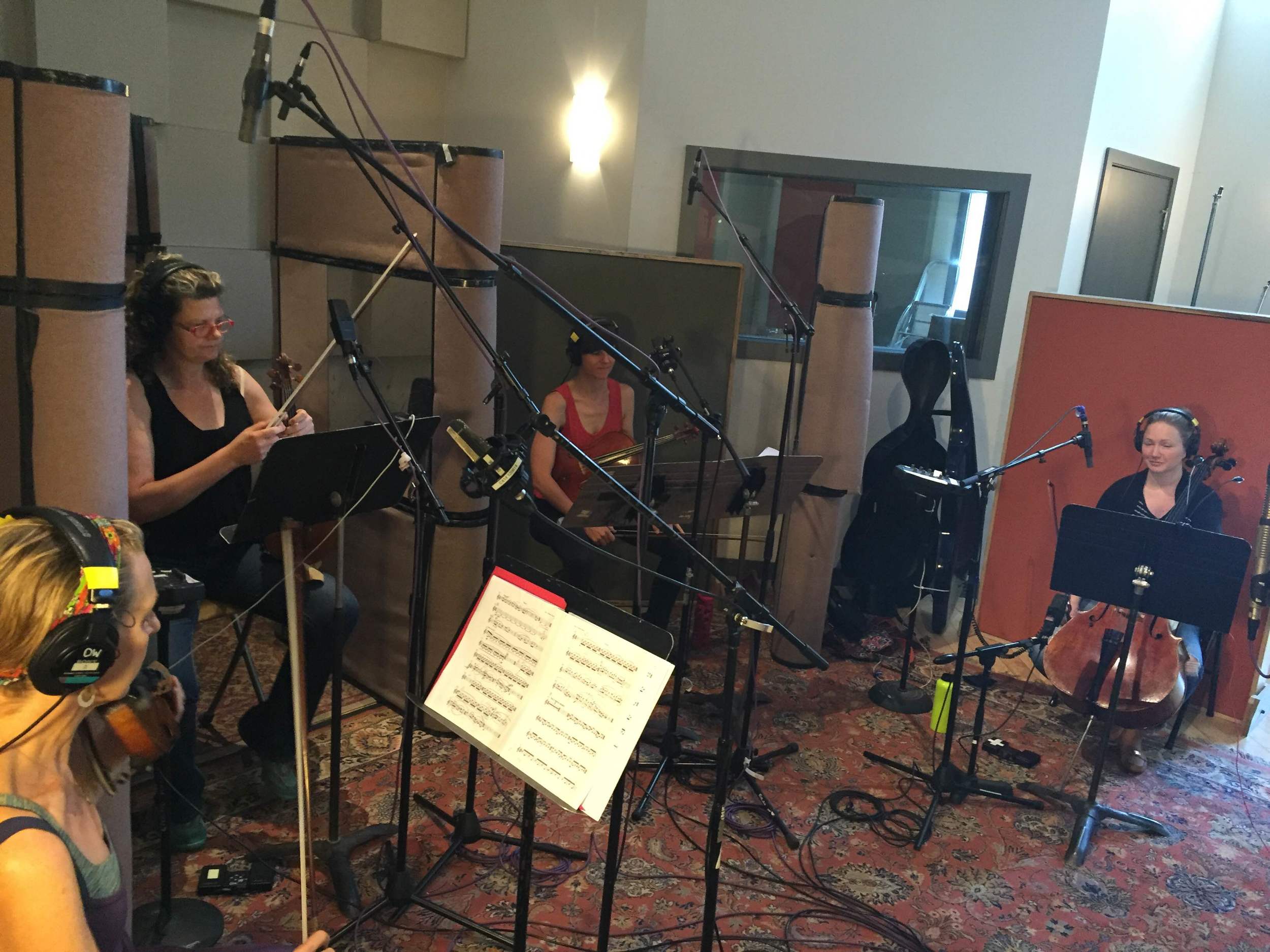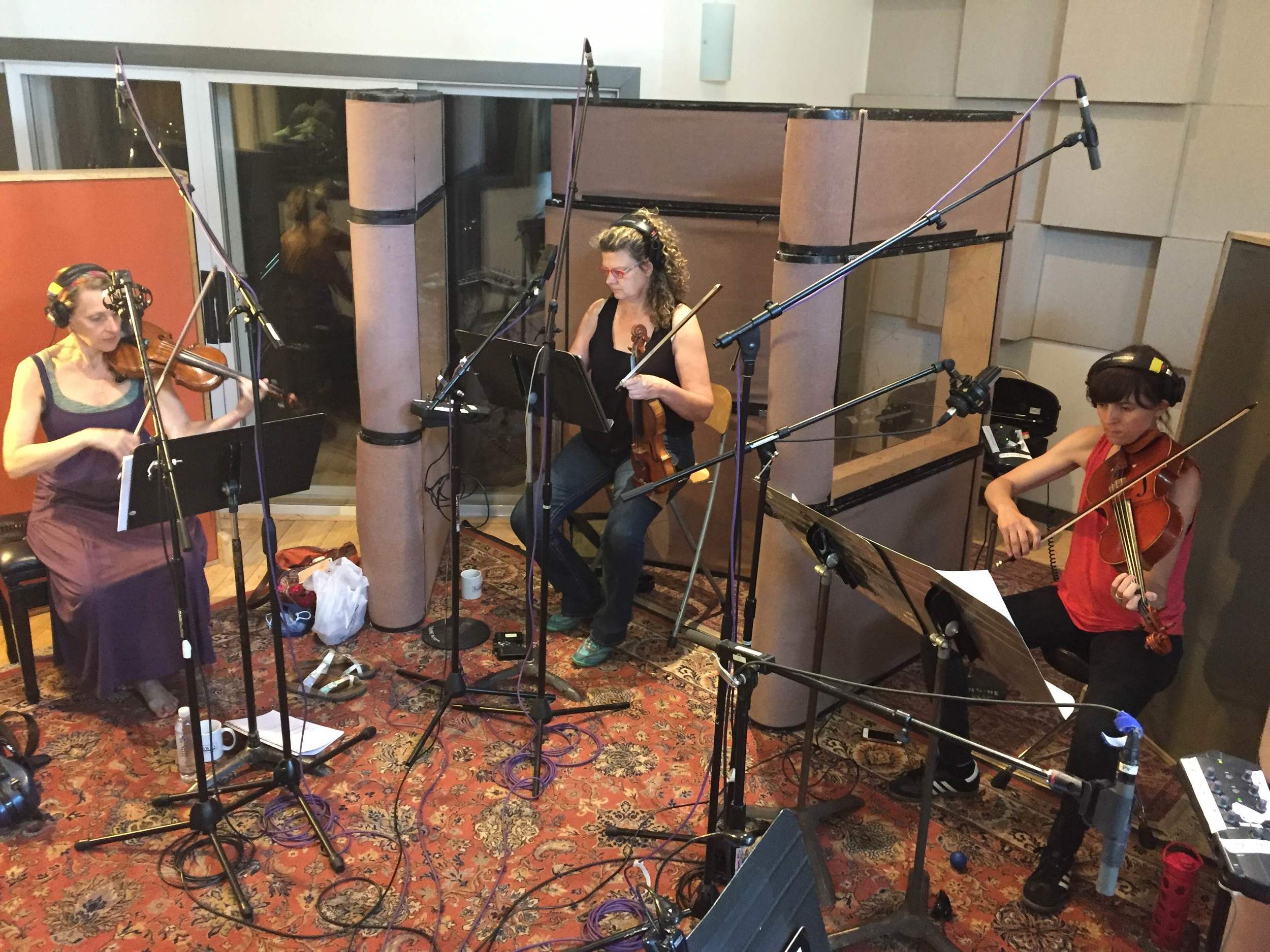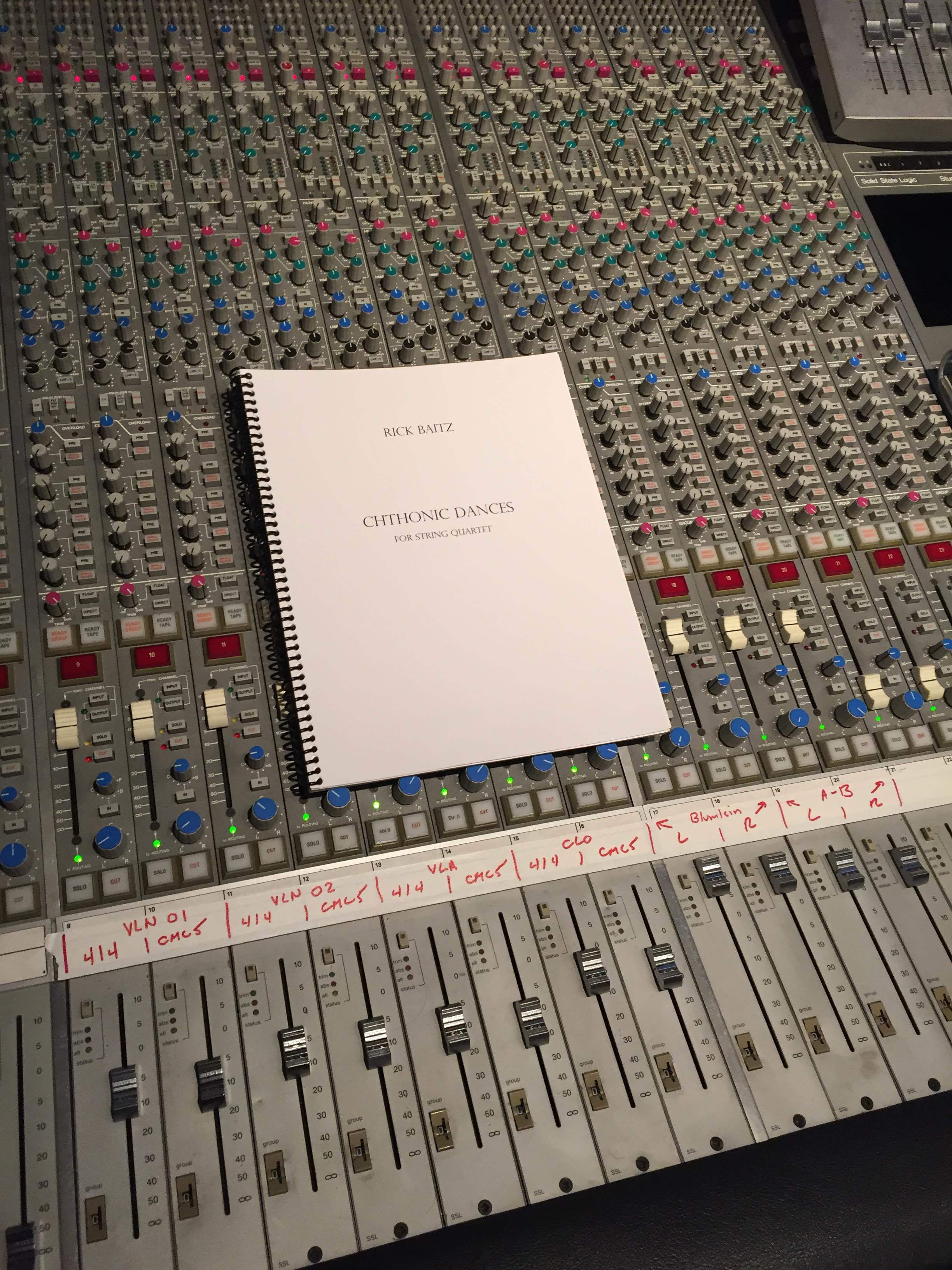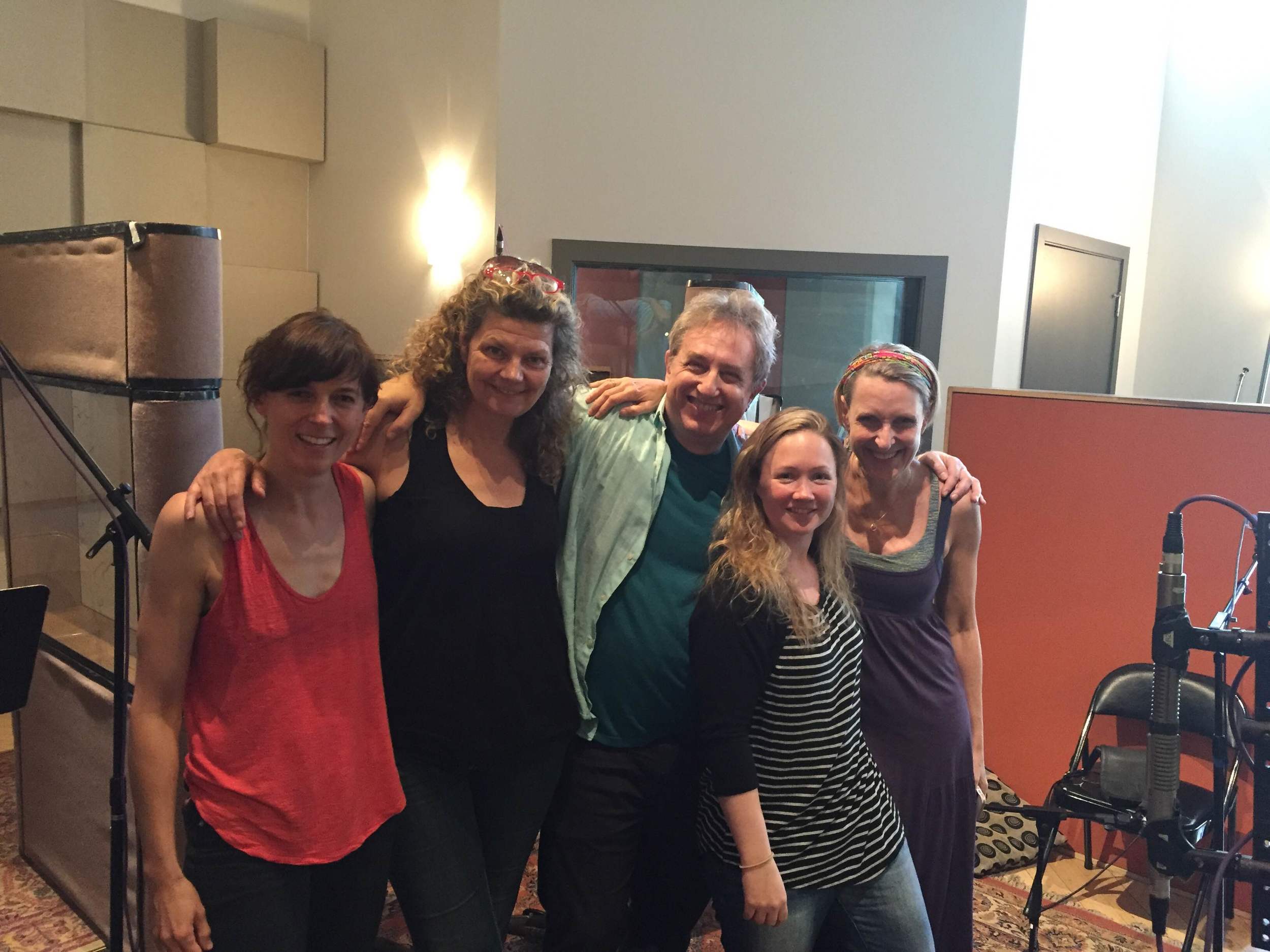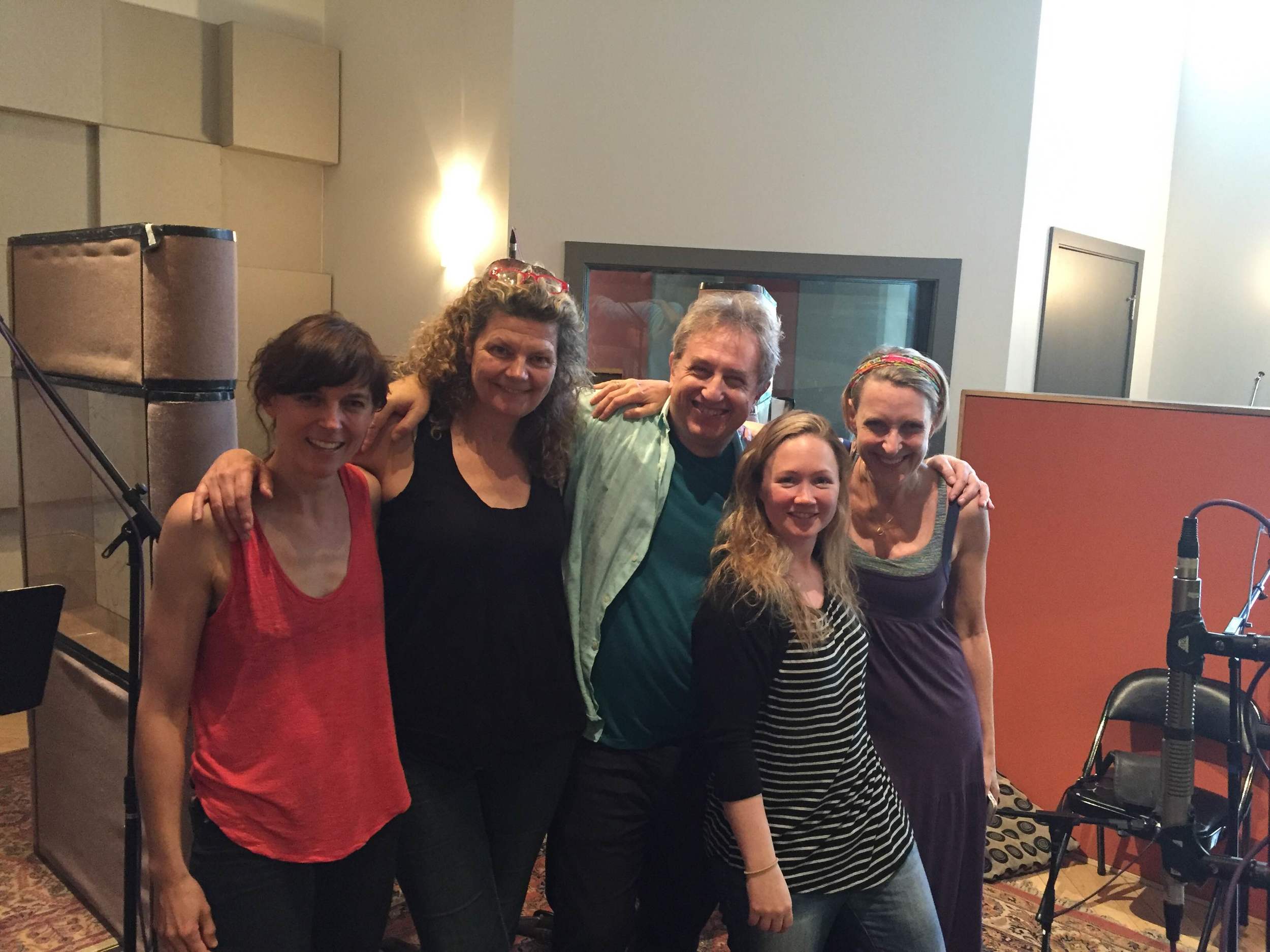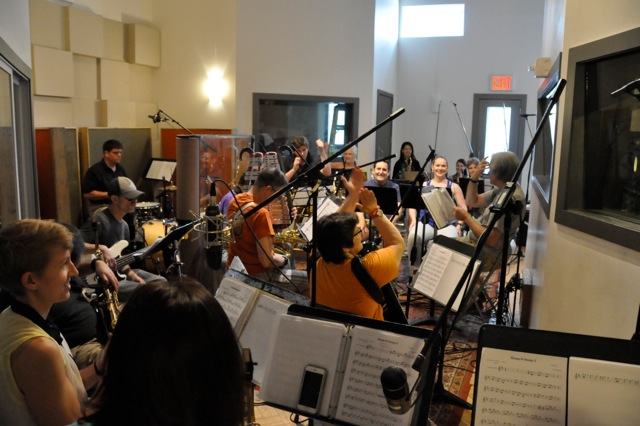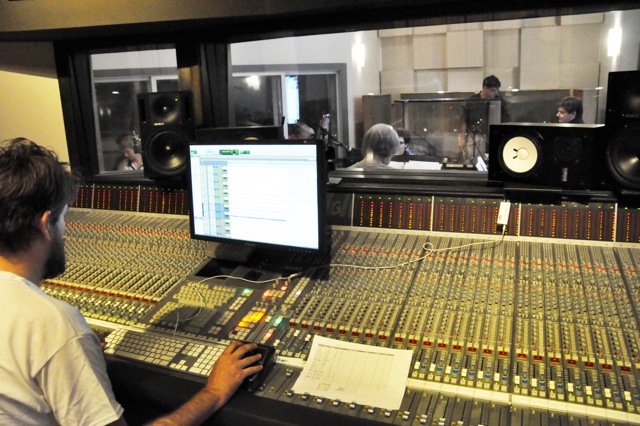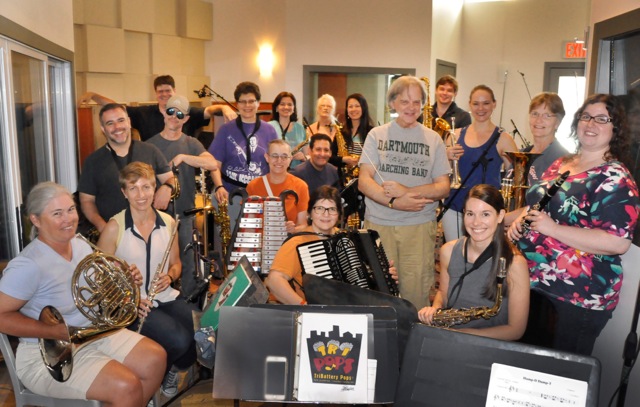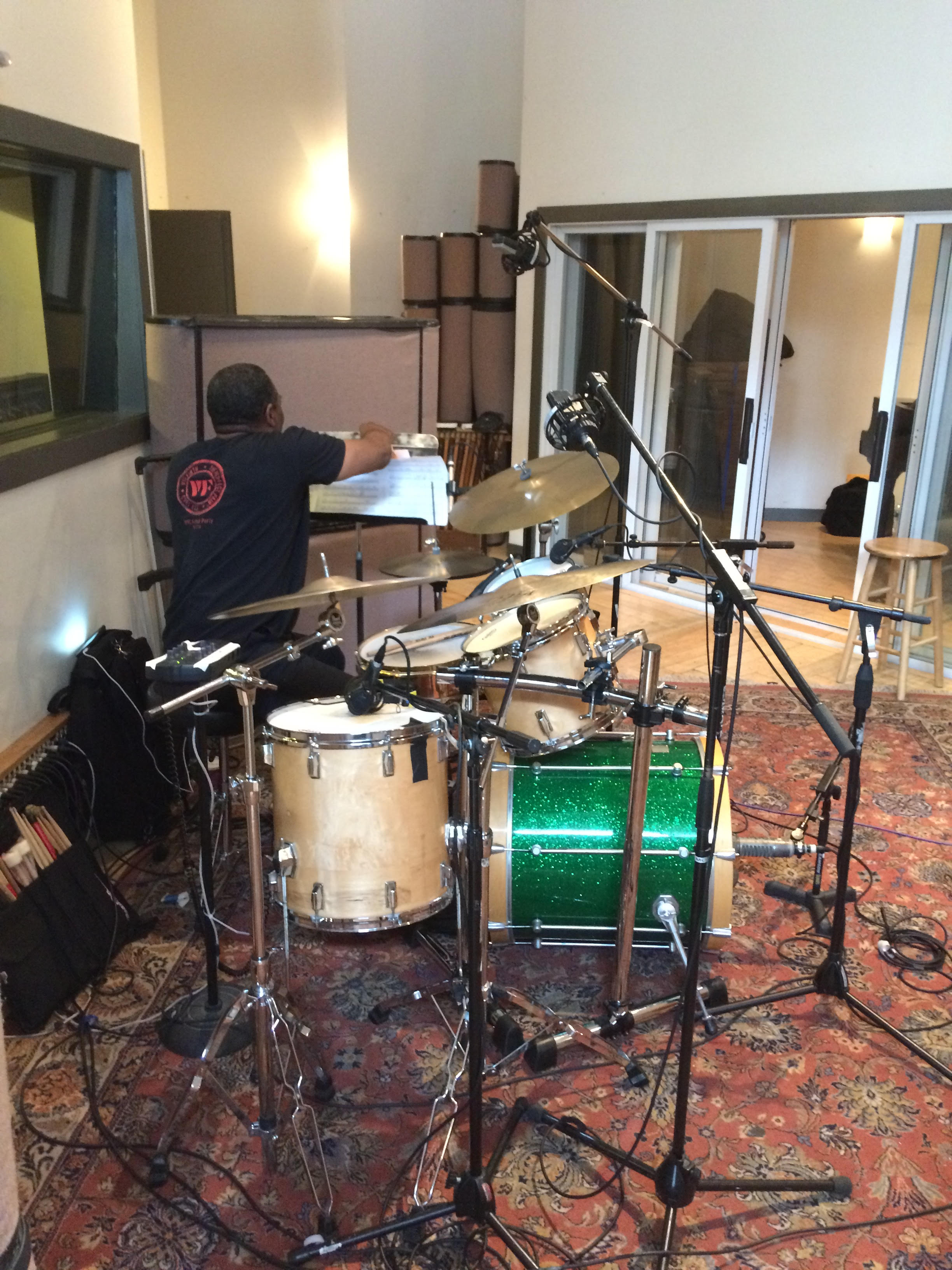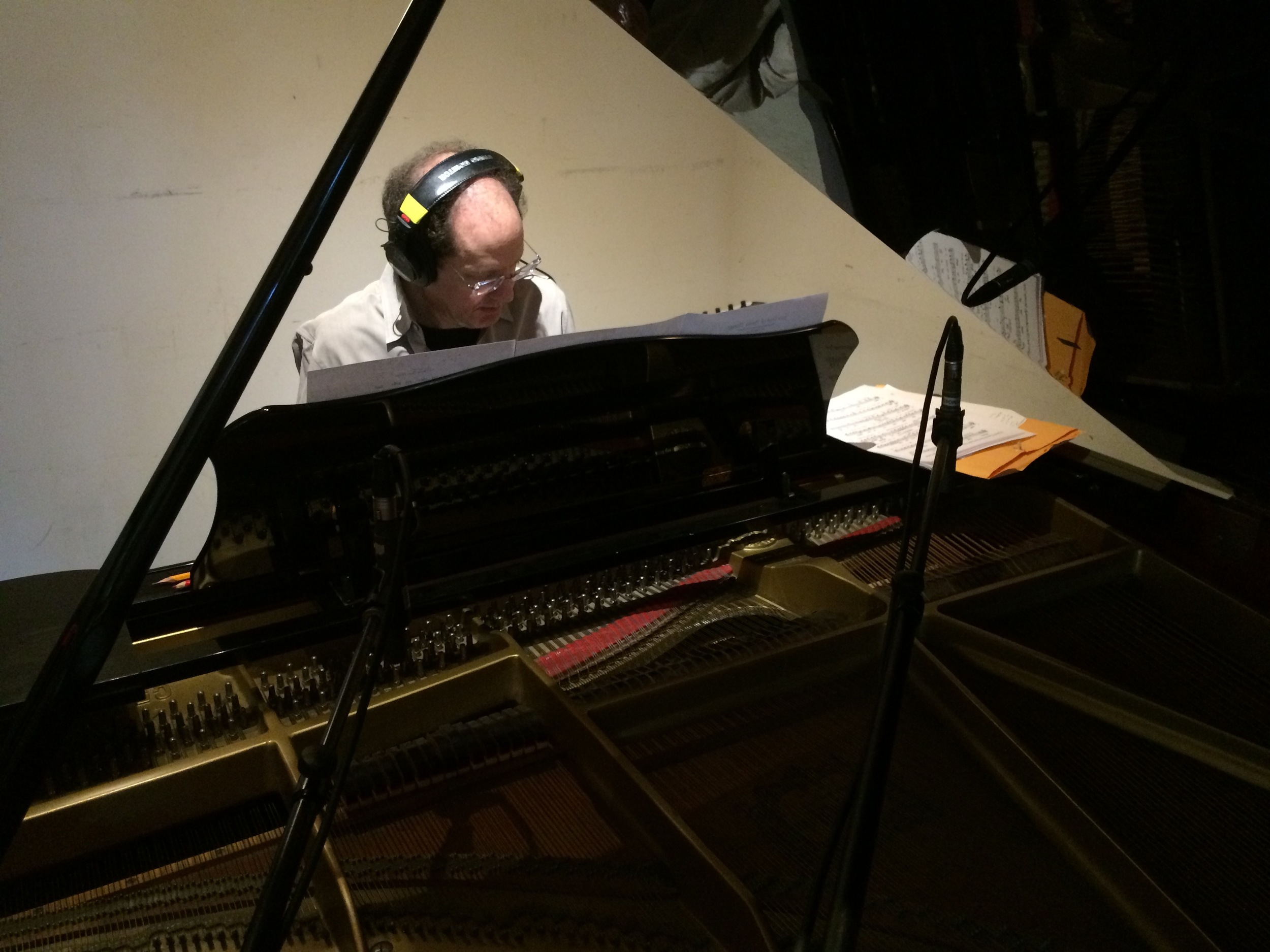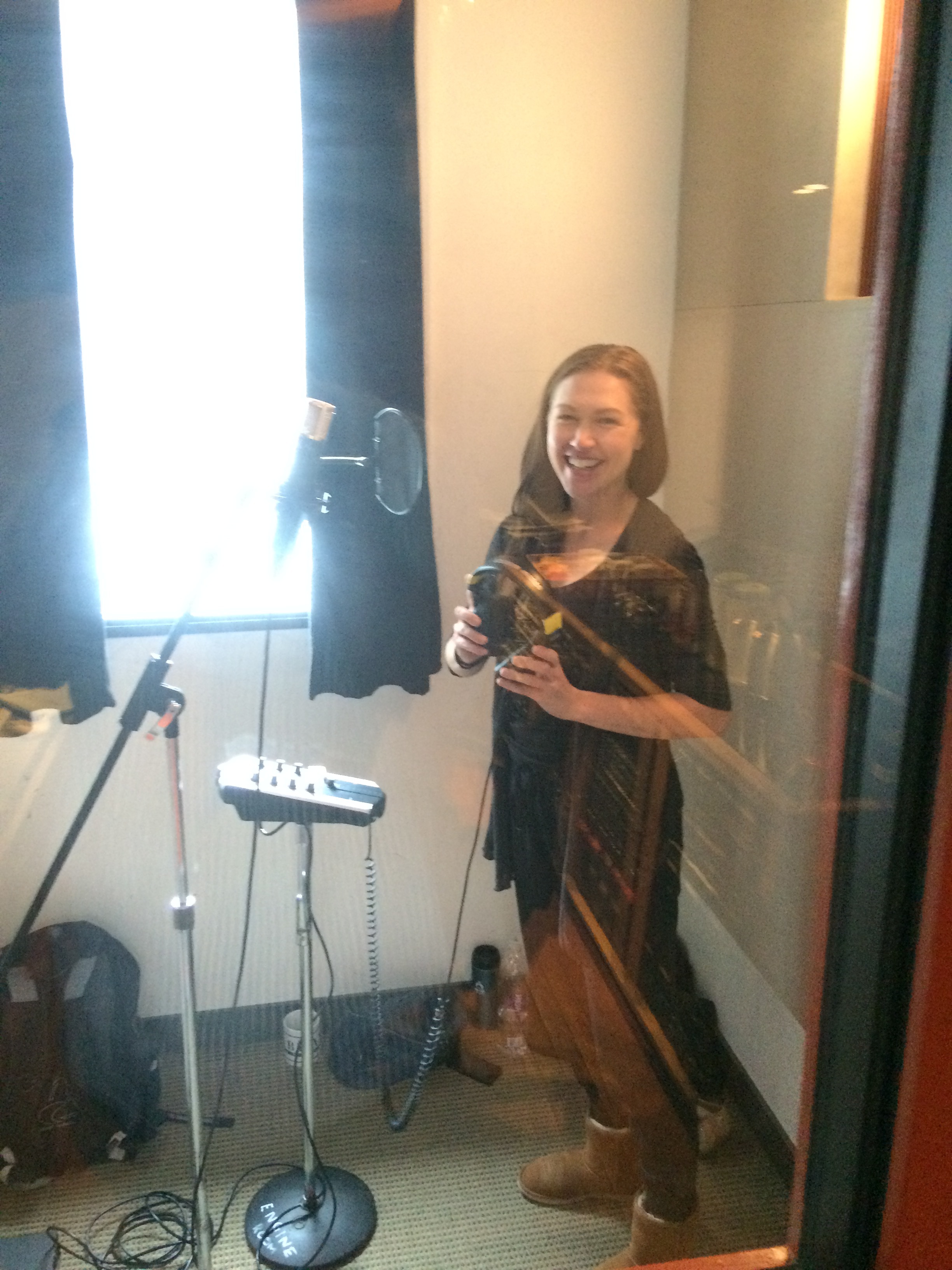Composer Jim Papoulis conducted a 9-piece string section in our mezzanine for the upcoming film Beyond the Backyard with engineer Rick Kwan.
Beyond the Backyard is a new coming-of-age film by director PJ Magerko, a recent graduate from NYU in the Spring of 2016.
Jim Papoulis is a composer, conductor, orchestrator and producer from New York City. His compositions are known for "exploring new modes of musical communication by honoring and connecting classical and traditional forms with non-Western sounds. Jim's distinct and ever-evolving approach unites classical with contemporary sounds, world rhythms, R&B, and voices, while combining live instruments with current composing and recording technology." As an orchestrator, his credits include Celine Dion, Christina Aguilera, Aretha Franklin, Tony Bennett, Natalie Cole and more.



